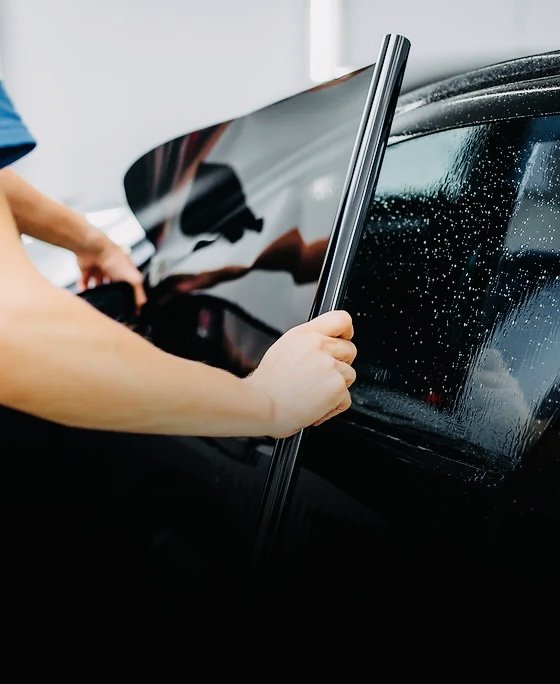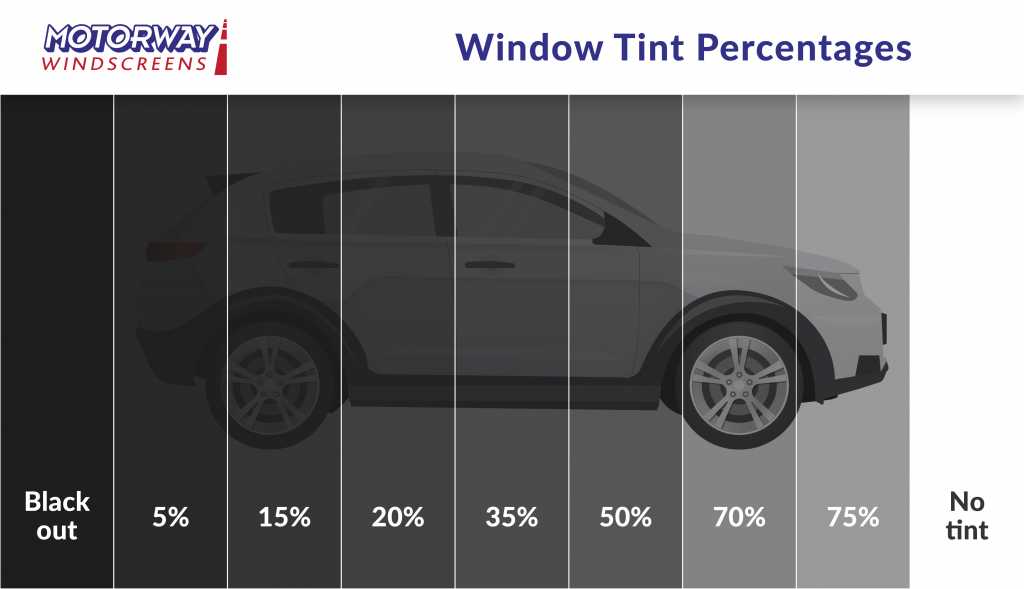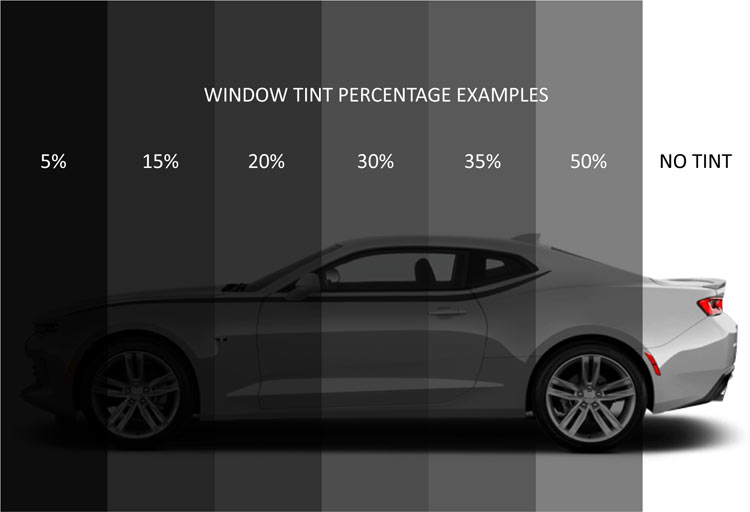A Comprehensive Overview to Recognizing Auto Window Color and Its Advantages
Car home window tinting serves greater than simply an aesthetic objective for vehicles. It provides different kinds, each with distinctive functions and benefits. Comprehending these alternatives, in addition to legal policies and maintenance ideas, is essential for any car owner. The benefits may substantially enhance driving comfort and car long life. As one checks out the nuances of window tinting, the inquiry arises: what kind of tint is best fit for private requirements?
Understanding Automobile Home Window Color: What It Is and Just how It Functions
Car home window color works as a protective obstacle that boosts lorry looks while offering practical benefits. This thin movie is put on the indoor surface area of cars and truck windows, reducing glare and obstructing damaging ultraviolet (UV) rays from the sun. By filtering system sunshine, car window color helps to manage the indoor temperature of the car, bring about boosted convenience for travelers and lowered reliance on air conditioning.Additionally, it protects the automobile's interior from fading, preserving both upholstery and control panel products. The tint can additionally enhance privacy, making it much more hard for outsiders to see inside the car. In addition, particular types of window tint can increase security; in the event of a crash, the film assists hold destroyed glass with each other, minimizing the danger of injury from flying shards. On the whole, car window tint offers both practical and visual purposes, making it a prominent selection amongst lorry proprietors.
Sorts Of Home Window Color: A Summary of Options
When taking into consideration home window color options, numerous types are offered, each with distinct qualities. Dyed, metalized, and ceramic home window tints provide varying levels of warm being rejected, UV security, and aesthetic appeal. Recognizing these distinctions can aid car owners make educated selections based on their choices and demands.
Dyed Window Tint
Dyed window color represents a preferred selection among vehicle owners looking for a inexpensive and reliable means to boost their lorry's aesthetics and privacy. This type of color is developed by positioning a layer of color between a safety covering and a sticky layer, causing a darkened appearance that minimizes glare and enhances visual comfort. While colored home window tint properly blocks harmful UV rays, it may not supply the exact same level of warm denial as other color types. In addition, its shade can fade over time, possibly decreasing its effectiveness. Despite these downsides, dyed window color stays favored for its cost-effectiveness and capacity to supply a sleek, stylish look to numerous lorry models.
Metalized Window Color
Metalized home window tint provides an equilibrium of style and capability, making it a prominent option among automobile proprietors. This sort of tint integrates metal particles within the movie, enhancing both visual allure and warmth rejection. The reflective quality of metalized color aids to reduce glare and enhance privacy, while additionally giving UV security, which safeguards the lorry's interior. Furthermore, metalized home window color can reinforce home window strength, potentially avoiding ruining throughout mishaps. Nonetheless, it is necessary to keep in mind that the metal parts can disrupt digital signals, such as general practitioner and cell phone reception. Generally, metalized window tint provides an effective solution for those looking for a mix of sun, look, and toughness security for their lorries.
Ceramic Home Window Color
Ceramic home window tint stands for a sophisticated option in the range of auto home window movies, providing distinct benefits over conventional colors. Unlike colored or metalized movies, ceramic tints use sophisticated ceramic particles, which efficiently turn down heat and UV rays without endangering presence. This innovation assures that lorries stay cooler, reducing reliance on a/c and improving gas effectiveness. Additionally, ceramic window colors are much less likely to disrupt electronic devices, such as general practitioner or mobile signals, making them a sensible selection for modern-day vehicles. Their toughness and scratch resistance contribute to a much longer life-span contrasted to various other types of colors. On the whole, ceramic window color offers remarkable efficiency, comfort, and security, making it a recommended choice for critical car proprietors.
Advantages of Vehicle Window Tint: Beyond Appearances
While lots of people associate auto home window color with boosted style, its benefits extend much past plain appearances. One significant benefit is warm reduction; home window tint can obstruct up to 99% of hazardous UV rays, securing and keeping the indoor cooler upholstery from fading. This not only boosts convenience throughout warm climate yet likewise minimizes dependence on a/c, bring about enhanced gas efficiency.In enhancement, auto window tint offers an added layer of privacy and safety and security. Tinted windows make it difficult for outsiders to see inside the vehicle, which can hinder theft and safeguard valuables. Furthermore, lots of colors enhance the glass, lowering the possibility of ruining in case of a crash, therefore enhancing safety.In enhancement to these useful benefits, car window tint can additionally add to glare reduction, boosting exposure for chauffeurs and travelers alike. This multifaceted strategy to comfort and security makes window color a valuable investment for lorry proprietors.
Lawful Considerations: Tinting Regulations by State
Before committing to auto home window tint, vehicle owners need to navigate a complex landscape of tinting laws that vary by state. Each state has particular laws controling the acceptable levels of tint darkness and reflectivity for various windows, including windshields, front side home windows, and back home windows. These policies frequently consist of visible light transmission (VLT) portions, which determine exactly how much click here to find out more light can travel through the colored glass.Some states allow darker tints on back windows while restricting front side and windshield tints for safety and security reasons. Furthermore, certain states may call for a certificate from the supplier to validate compliance with tinting laws. Breaking these regulations can cause penalties, mandatory elimination of the color, or both. As a result, it is essential for car proprietors to research their state's laws thoroughly to guarantee legal compliance prior to mounting home window tint. This diligence can save money and time in the lengthy run.
Picking the Right Tint: Variables to Think about
When selecting the appropriate window tint for an automobile, several essential factors enter into play. Tint darkness levels, UV protection ratings, and compliance with legal policies are vital factors to consider to guarantee both visual appeals and functionality - Car Glass Tinting. Reviewing these aspects will aid people make an enlightened choice that meets their requirements and sticks to regional laws
Tint Darkness Degrees
Selecting the suitable tint darkness degree is important for attaining the desired equilibrium between looks and functionality in car window tinting. Various states have differing legal policies pertaining to tint darkness, which can affect the option. Typically, colors are gauged in portions, with lower portions indicating darker tones. Darker colors use boosted privacy and a streamlined appearance but can minimize visibility, particularly during the night. On the other hand, lighter colors preserve a more open feeling, ensuring adequate presence while still giving some warm and glow reduction. When making a choice, individuals must consider their driving habits, neighborhood regulations, and individual choices. Inevitably, the right tint darkness degree boosts the automobile's appearance while making certain safety and security and compliance with lawful criteria.
UV Protection Score
Color darkness levels play a substantial role in the general performance of car home window tinting, yet an additional crucial element to review is the UV protection ranking of the selected tint. This ranking shows the portion of dangerous ultraviolet rays that the tint can block. High-quality colors commonly provide 99% or more UV security, protecting travelers and the lorry's inside from sun damages. Long term exposure to UV rays can lead to skin issues and fading of upholstery, making a high UV security ranking vital for wellness and long life. When choosing home window color, customers must prioritize this rating alongside darkness degrees to guarantee maximum comfort and safety while driving. Comprehending these elements help in making a notified decision when purchasing vehicle window tinting.
Legal Rules Compliance
Comprehending regional legal policies is important for anybody thinking about automobile window tinting. Each state or region has details legislations governing the permitted degrees of color darkness and reflectivity for different windows. These policies commonly define the visible light transmission percentage, determining just how much light can pass through the colored glass. Non-compliance can bring about fines, obligatory removal of the color, or concerns during automobile examinations. Additionally, some areas may have restrictions on using specific tinting materials, calling for customers to choose items that fulfill safety and security standards. As a result, it is necessary for car proprietors to investigate their regional regulations completely before picking home window tint to assure compliance and stay clear of prospective lawful complications.
Setup Refine: DIY vs. Specialist Services
Exactly how does one decide between a do it yourself installation and working with expert services for vehicle window tinting? The option frequently hinges on spending plan, experience, and desired results. A DIY technique can be economical, permitting individuals to minimize labor prices. It calls for a particular level of skill and knowledge concerning the tinting process. Those who are thorough and person may locate success with do it yourself kits offered in the market.Conversely, expert solutions use experience and premium products, guaranteeing a perfect surface. Experts typically ensure their job, offering comfort against possible issues such as gurgling or navigate here peeling. Furthermore, they recognize with local laws regarding tinting, which address can be complex for the typical cars and truck owner.Ultimately, the decision mirrors a balance in between expense, personal capability, and the expected quality of the tinting job. Each alternative has its benefits, and the very best option depends on private scenarios and preferences.
Maintenance Tips: Maintaining Your Tint in Top Problem
Keeping the look and performance of window tint requires regular interest and treatment, specifically in differing weather problems. To preserve the tint, it is vital to prevent utilizing unpleasant cleansing products, which can damage the movie or scratch. Car Glass Tinting. Rather, soft microfiber towels and mild, ammonia-free cleaners need to be used for cleansing the tinted surfaces.Furthermore, it is recommended to wait at the very least 30 days after installment before cleansing the home windows to enable the tint to completely stick. Car park in shaded locations or using sunshades can help in reducing the fading effects of UV rays and prolong the tint's life expectancy. Normal evaluations for bubbles, peeling, or staining are recommended, as very early detection can assist in fixings. Ultimately, staying clear of extreme temperature level variations, such as pressing warm home windows in cold climate, will certainly assist maintain the tint's honesty and look with time
Regularly Asked Questions

For How Long Does Window Color Commonly Last on a Lorry?
Window tint normally lasts between five to 10 years, relying on variables such as high quality, application, and environmental conditions. Routine maintenance and appropriate treatment can prolong its life expectancy, making sure optimal performance and look gradually.
Can Window Tinting Damages My Automobile's Original Glass?
Home window tinting, when used properly, does not harm a vehicle's initial glass. Nevertheless, inappropriate installation or low-grade materials might lead to problems like gurgling or peeling off, possibly affecting the glass's stability gradually.
Is Window Tinting Safe for All Kinds Of Automobiles?

Will Home Window Tinting Space My Car Guarantee?
The question of whether home window tinting voids a car guarantee frequently depends upon the supplier's plans. Typically, if the color does not harm the car, guarantees usually continue to be undamaged. Nonetheless, consulting the dealership is suggested.

Can I Get Rid Of Home Window Color Myself if Needed?
Getting rid of window color oneself is possible, however it requires mindful interest to stay clear of damaging the glass. Individuals ought to make use of appropriate tools and methods to guarantee an effective elimination without leaving glue residue or scratches behind. While dyed home window color effectively blocks hazardous UV rays, it might not use the same level of warmth rejection as other tint kinds. Ceramic window color represents an advanced alternative in the spectrum of auto window movies, supplying unique benefits over traditional colors. Prior to committing to vehicle window tint, automobile proprietors should navigate a complex landscape of tinting policies that vary by state. These regulations typically include visible light transmission (VLT) portions, which determine how much light can pass through the colored glass.Some states permit darker tints on back windows while restricting front side and windscreen colors for safety and security factors. Tint darkness degrees play a significant role in the total performance of automobile home window tinting, however one more important factor to review is the UV defense score of the chosen tint.